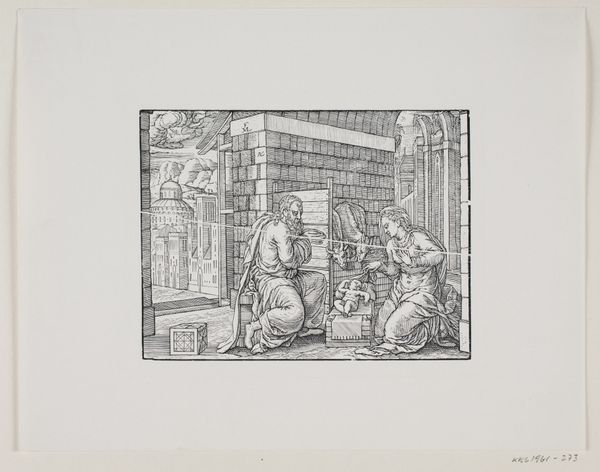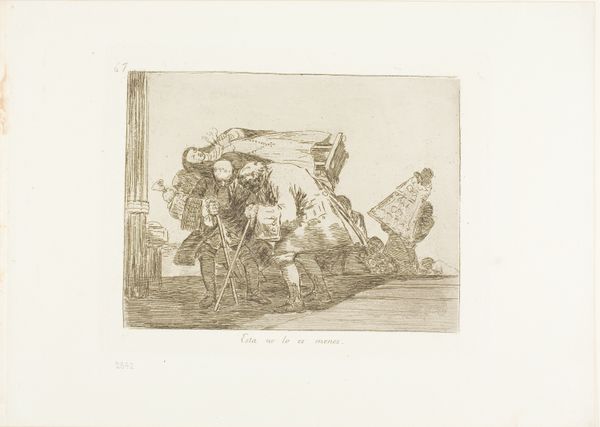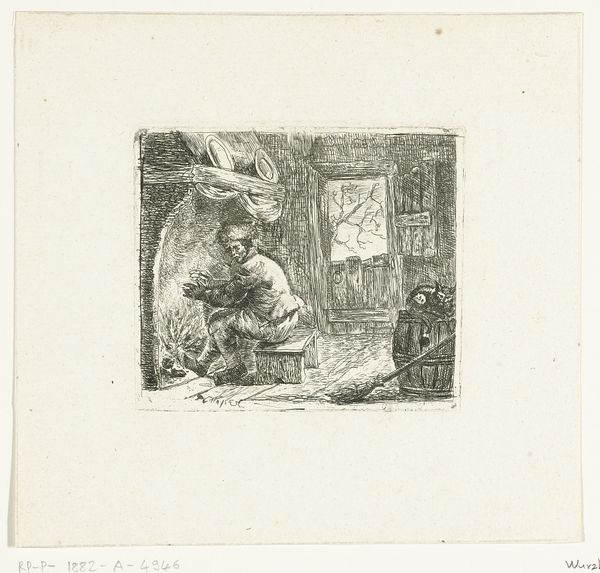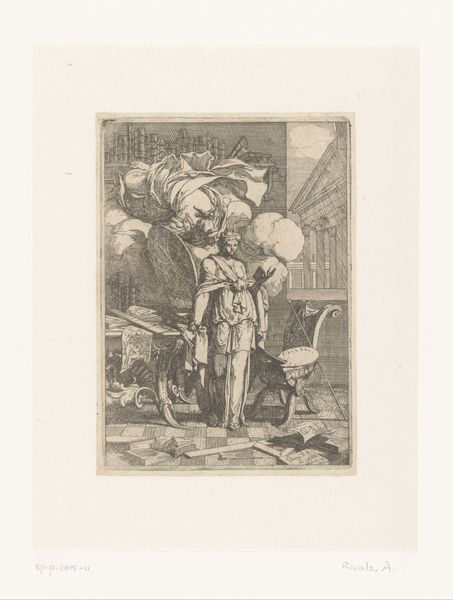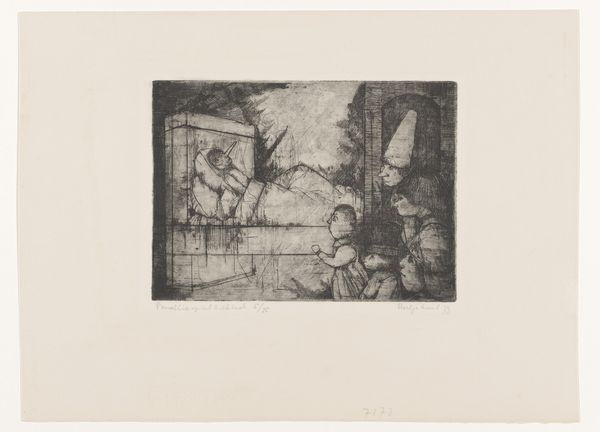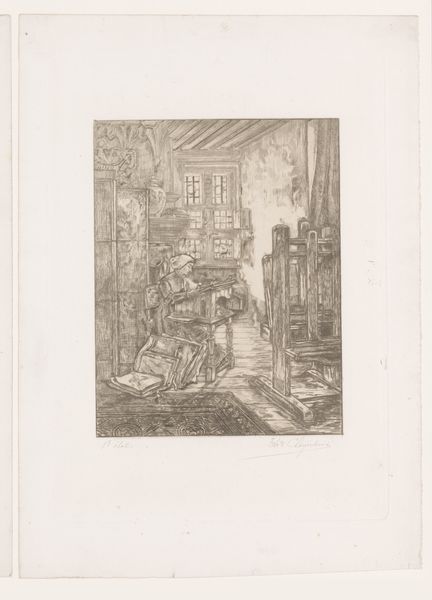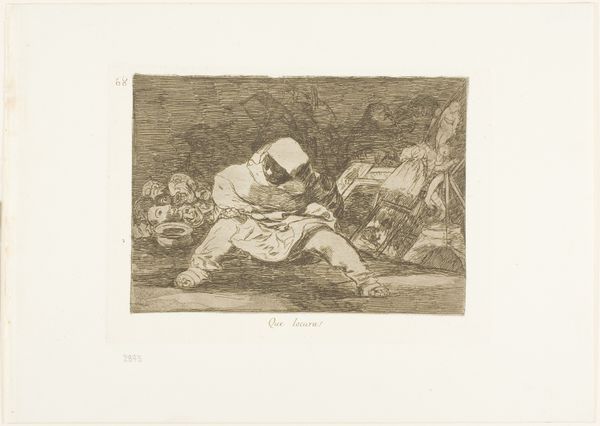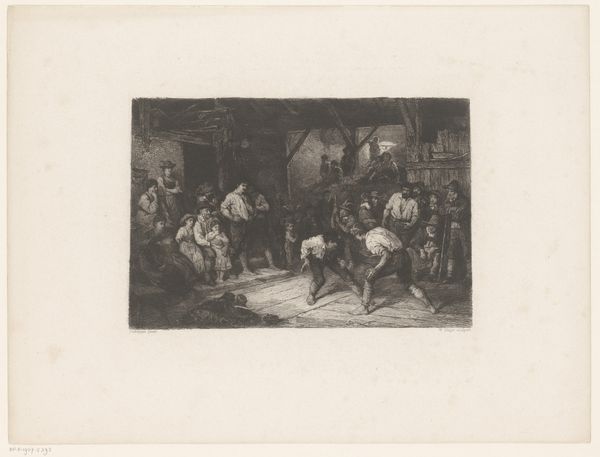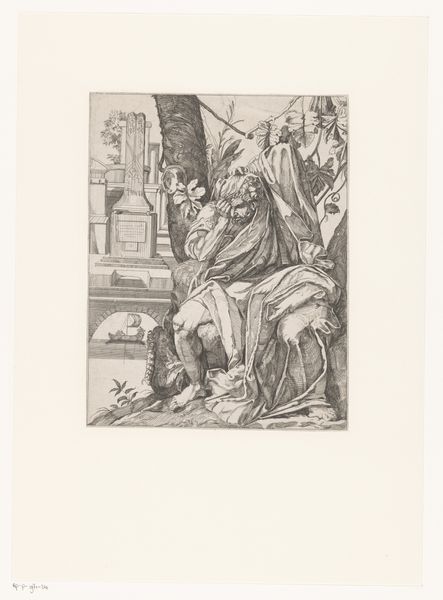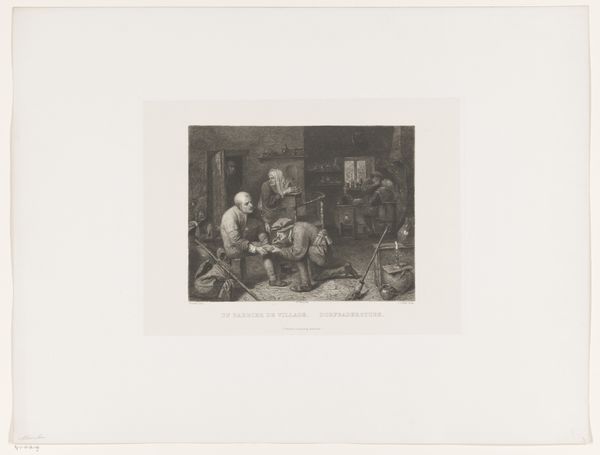
print, woodcut, engraving
#
ink drawing
#
medieval
# print
#
landscape
#
figuration
#
11_renaissance
#
woodcut
#
line
#
history-painting
#
northern-renaissance
#
engraving
Dimensions: 128 mm (height) x 155 mm (width) (billedmaal)
Curator: This intricate engraving, "The Visitation," was created by Melchior Lorck around 1574. Note how he renders this biblical encounter between Mary and Elizabeth with such detail. What’s your immediate response to this piece? Editor: It's like stepping into a dream, a meticulously rendered dream. The two figures meeting against that almost operatic backdrop. It's both intimate and epic, you know? Does the landscape distract you? It doesn't distract me. Curator: It's typical of Northern Renaissance art, I would suggest. These historical paintings integrated into a landscape reflect the Renaissance concern with representing the natural world and telling sacred stories for a new secular audience. These engravings democratized art and religious knowledge. Editor: I feel that tension between intimacy and something bigger, grander. You said ‘democratization of art,’ but for me this is, despite all of its social implications and background details, such an interpersonal thing. Like those mountains—they aren't really THERE there. Do you see? Curator: True. Although it adheres to a historical, religious narrative, the piece invites multiple readings. One could consider, perhaps, that Lorck isn't just portraying an event but using it to explore broader themes. For instance, notice how the formal, structured architecture contrasts sharply with the undulating landscape in the background. What do you suppose that suggests about the social order that influenced the artwork? Editor: You're right. That feels totally… intended. Look how sharp everything becomes as the artwork pulls us closer. In a similar way, the women hold each other. I love that gesture so much. Everything else in the work—every pillar and building in the background, it seems, would topple over without it. Curator: Exactly. It also underscores how an artist navigated expectations during the Renaissance and how artistic vision shaped—and was shaped by—socio-political considerations. Editor: You see everything as so plotted. The hand-to-hand for me here is much simpler: Lorck captured something truly holy. He did this, by the way, with ink and metal—a testament to how emotion and line can really blend to give a person goosebumps. Anyway, it's time for a beer. I'm heading out. Curator: A fitting end, then, wouldn't you say? Thanks for lending me your ideas and perspectives, and have a great evening!
Comments
No comments
Be the first to comment and join the conversation on the ultimate creative platform.
